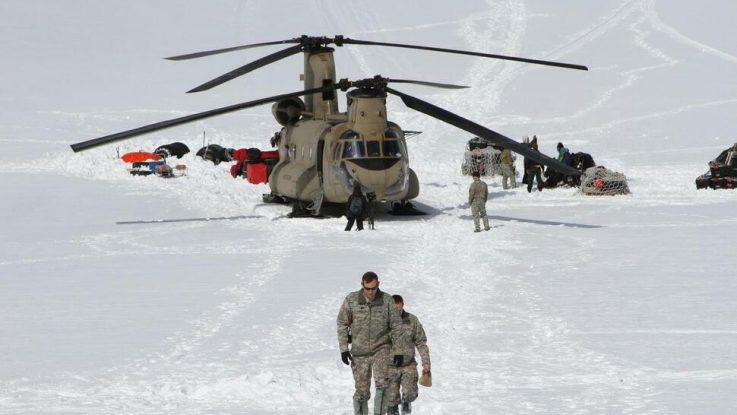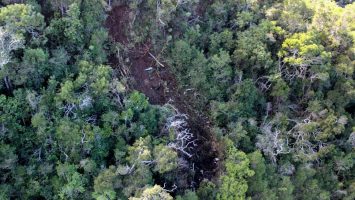
U.S. Armed force pioneers say they are ready to patch up powers in Alaska to all the more likely plan for future chilly climate clashes.
By LOLITA C. BALDOR, Associated Press
JOINT BASE ELMENDORF-RICHARDSON, Alaska (AP) — The U.S. Armed force is ready to redo its powers in Alaska to more readily plan for future chilly climate clashes, and it is normal to supplant the bigger, vigorously prepared Stryker Brigade in the state with a more portable infantry unit more qualified for the freezing battle, Army pioneers say.
Armed force Secretary Christine Wormuth said she hopes to settle on a last choice soon about the Alaska troop change, saying she will probably change over the Stryker unit, which utilizes weighty, eight-wheeled vehicles, to an infantry detachment.
“I think right now the reason for Army powers in Alaska is significantly more about making a super chilly climate fit arrangement” that could be utilized in Europe or the Indo-Pacific, Wormuth told The Associated Press on a new excursion to Alaska to meet with senior administrators and troops. “We’re attempting to reach a point where we have Arctic skilled powers — powers that can get by and work in that climate.”
The U.S. has long seen the Arctic as a developing area of contest with Russia and China, especially as environmental change brings hotter temperatures and opens the ocean paths for longer timeframes. Yet, authorities have recognized that the U.S. lingers behind those countries. Russia has done whatever it takes to build its tactical presence there, and China sees the district as financially significant for transportation and normal assets.
The progressions in the Army were getting looked at a long time before U.S. pressures with Russia took off following its intrusion of Ukraine.
Under the new Army plan, the first Stryker Brigade Combat Team, 25th Infantry Division, presently situated in Alaska, would be changed over completely to a light infantry detachment. Joined with the division’s fourth Infantry Brigade Combat group, the two units will turn into the eleventh Airborne Division, situated in Alaska. Furthermore, the huge Stryker vehicles, which are to some degree old, would be supplanted by different vehicles that are more appropriate for the frigid and cold territory, Wormuth said.
The more prominent spotlight on chilly climate war incorporates a transition to direct significant preparation practices for the Alaska-based troops in their home state, sickly circumstances they would look in an Arctic battle. The soldiers had been planned to go to the Joint Readiness Training Center at Fort Polk, Louisiana, in March, however Army pioneers chose to keep them in Alaska so they could prepare under the bone chilling temperatures and frozen territory that they would experience in any chilly climate fight.
“I think it truly checks out to have powers prepared in the Arctic conditions that they would be utilized for,” Wormuth said in the wake of expenditure two days at the still frigid base. “Assuming we will have ground powers in Alaska, that is the very thing that we want them to have the option to do. They can’t get that experience moving to the Mojave Desert or to Fort Polk.”
Last year, in an underlying preliminary occasion, Pacific-based powers remained in Hawaii for their planned activities at the National Training Center in California’s Mohave Desert. Authorities said they have gained from these initial two maneuvers, as they attempt to reproduce conditions and move work force and gear from deeply grounded preparing focuses to additional far off areas.
During her visit to Joint Base Elmendorf-Richardson, Wormuth met with officers who called the preparation shift a triumph. Maj. Gen. Brian Eifler, officer of U.S. Armed force Alaska, said the advantages offset any setbacks made by the need to fabricate the framework for the preparation practice in the distant north.
“You’re bamboozling the two universes, without losing excessively,” Eifler said. “We received significantly more in return than we naturally suspected we would.”
Eifler expressed that while they didn’t have however many preparation spectators or regular citizen job players as they would have at one of the instructional hubs, the coaches that came had the option to become familiar with Arctic climate activities.
Also, Eifler said, the change stayed away from the exorbitant and tedious shipment of vehicles, weapons and other gear to Louisiana and back. The extended pressing and transportation process when a preparation practice in Louisiana or California frequently powers troops to be without their weapons frameworks and other hardware for quite a long time.
During briefings at the Alaska base, commandants said the preparation included enormous scope battle tasks under outrageous atmospheric conditions in what they called the “most difficult climate on the planet.” They said that 10,000 soldiers — including Canadian Army and Air powers — were associated with the activity.
Yet, they said the activity additionally highlighted the requirement for better chilly climate vehicles, including those equipped for conveying Arctic infantry powers.
Gen. Joseph Martin, the bad habit head of the Army who was in Alaska this year, said the assistance has been concentrating on what might be the best kind of vehicle for the soldiers. “Is the Stryker the right vehicle for an Arctic champion? In the colder time of year, you want vehicles that can get across snow,” he said.
Furthermore, he said, the vehicle likewise should have the option to work in the spring or summer defrost, when the ground goes to mud.
As Wormuth wrapped up her visit, she proposed that the choice on the Stryker Brigade is pushing ahead soon. Any ultimate conclusion would require endorsement from Defense Secretary Lloyd Austin.
“Assuming you will do enormous developments of gear and that’s what things like, the late spring is a really significant window since it’s much simpler to move vehicles around than doing it during the coldest part of the year,” she said.
Also, in discussions with legislative officials, including during a meeting this week, she clarified that the change wouldn’t lessen the quantity of fighters in Alaska. All things being equal, she expressed that while the infantry unit will be more modest, the Army would balance that misfortune by expanding the size and capacities of the base camp.
All the more comprehensively, she consulted with authorities in Alaska about the expected requirement for additional progressions as the U.S. military’s Arctic procedure develops.
The U.S., Wormuth said, has opposed moves to mobilize the Arctic, even as Russia has extended its tactical presence and basing there. Yet, she said, “will that outlook proceed with given what the Russians are doing in Ukraine? Or on the other hand will that get returned to? Will that make a window to diversely contemplate things?”
Authorities said there are questions regarding whether one of the Pentagon’s soldier orders — like European Command or Northern Command, situated in Colorado — ought to take full responsibility for Arctic and the U.S. military job there. Wormuth said the issue needs further conversation, and any choice might be years away.




Leave a Reply